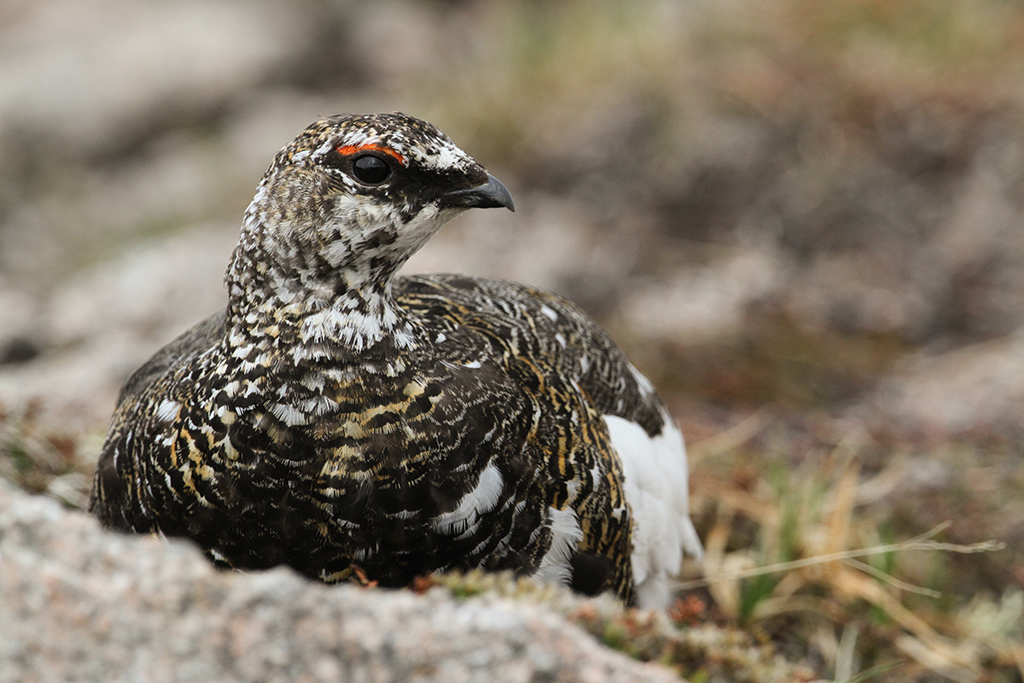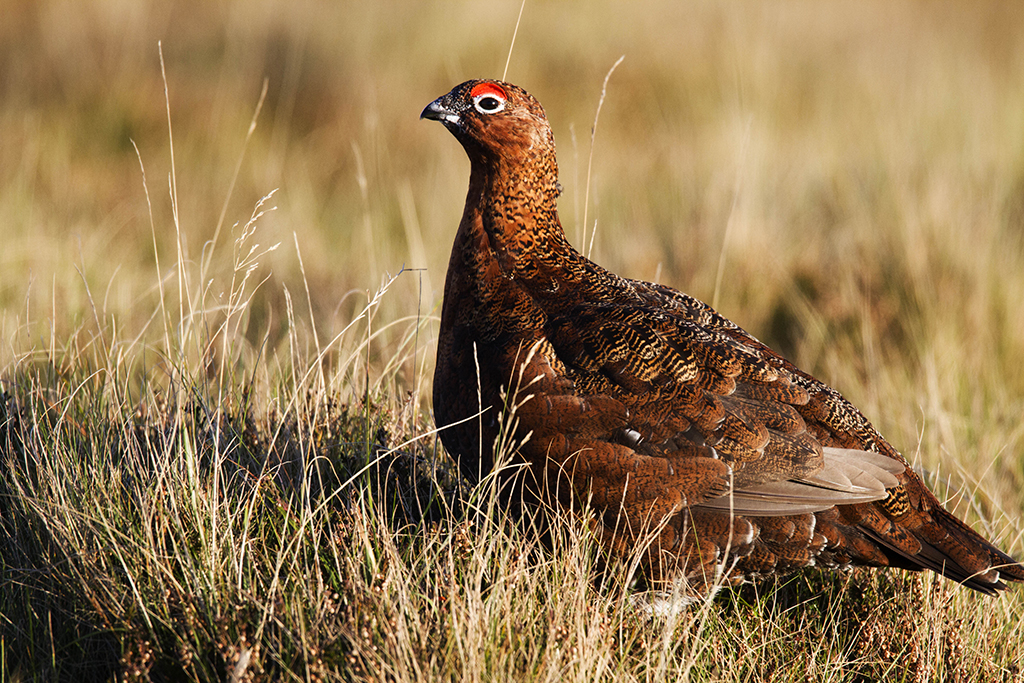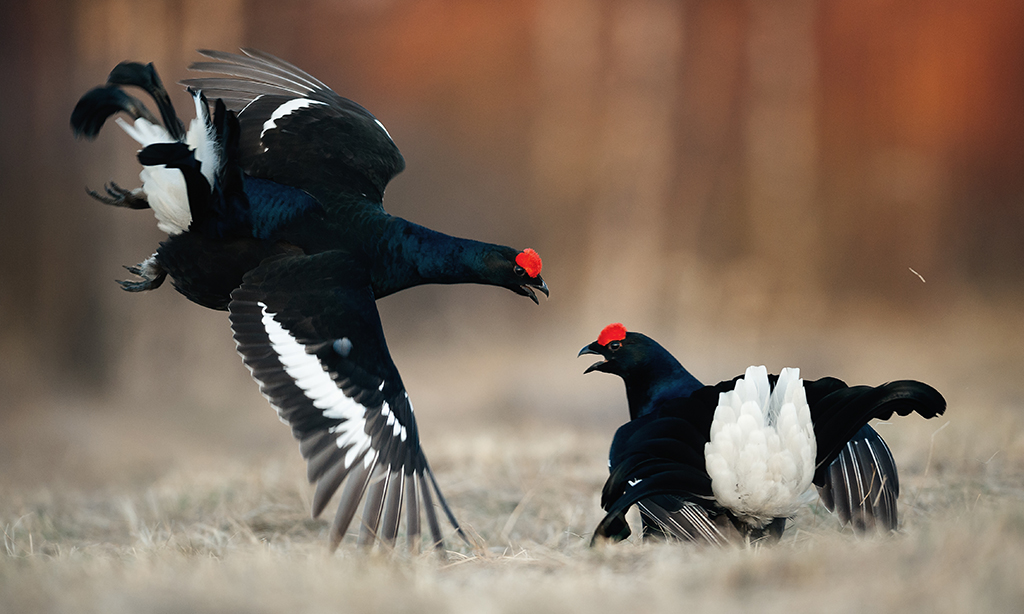
Nurturing the famous four – Scotland’s grouse species
The Glorious Twelfth arrived last week, as Scotland’s grouse season got underway. They are a wonderful but fragile resource that needs to be nurtured.
Scotland has four grouse species – red, black, ptarmigan and capercaillie.
When Scotland’s grouse are mentioned, the red grouse is the species that springs most readily to mind. But we actually have four grouse species, all living in their own little niche from the top of the highest Munro right down to the shelter of mature pine forests. Two of these grouse species cannot be found south of the border.
The hardiest of all and the smallest is the ptarmigan (lagopus mutus), which survive all year round at the tops of Scotland’s highest hills north of the Highland Boundary fault. This is the only British bird that changes colour with the various seasons in order to camouflage itself from predators. In winter they become all white except for the black tail and, in the case of the males, a black band through the eye.
Although considered relatively stable in numbers, there are concerns that if the greenhouse effect does warm our climate in the long term, the end result could be less snow in the winter, leaving them a lot more exposed to the prying eyes of predators, especially those of eagles.

A male ptarmigan
Most recent winters have had reduced snowfalls and yet ptarmigan numbers seem to have remained stable. This is because during mild spells they use cover more, staying hidden amongst rocks and heather to avoid being too visible. This is possibly not too surprising, as on their west coast range, where the weather tends to be more moderate, they live at lower altitudes than on the colder east side of Scotland.
Moving downhill, heathery moorland is the habitat of red grouse (lagopus lagopus scoticus). This bird is a subspecies of the willow grouse and entirely unique to the British Isles. The ‘Glorious Twelfth’ of August marks the start of the grouse shooting season, with the ability of the red grouse to hug the contours of the land while also travelling at rocket-propelled speeds attracting many shooters from across the globe.
Many moors are managed specifically for this commercial bird, with heather burnt every spring to provide re-growth young shoots to feed on, in amongst longer growth heather patched for cover and nesting. Medicated grit is often provided to help reduce parasitic worms, whilst acaracides are utilised on sheep to kill ticks on the moors and to minimise the risk of tick-borne diseases.
Despite these measures and control of crows and foxes, numbers of red grouse have been declining since the Seventies. Some moors are more adversely affected than others, for no obvious reasons.
Despite reduced numbers from their heyday periods, red grouse shooting still generates at least £23.3million of income for Scotland and
supports many full-time jobs.

A red grouse
Next lowest down on Scottish hills is the beautiful black grouse (lyrurus tetrix), which frequents scrub hill land amongst birch trees and rough grazing. In spring, when the daylight period is just right, the males come together at dawn leks to display and call to attract the female greyhens.
This is one of the most glorious sights and sounds in Scotland’s natural arena. The arrival of the greyhens causes a dramatic increase in display activity, with males hissing and jumping in the air before beginning their
burbling song, which can carry over a kilometre in distance. Neighbouring cocks will engage in ritualised battle, which sometimes leads to real blows and injuries. Generally, the cocks nearest the centre of the lek will mate with more greyhens, passing on their genes for the next generation.
In Poland leks of over sixty birds have been known, but in Scotland the biggest leks tend to be nearer to twenty cocks, with most only consisting of five to ten. Black grouse vary in their abundance but are low enough in number that they are not currently shot by estates. The consensus of opinion is that with sympathetic management and predator control, black grouse numbers should remain stable in Scotland.
The last Scottish grouse species is completely protected by law and it has been illegal to shoot the capercaillie (tetrao urogallus) since 2002, after a voluntary ban from the 1980s. It is even illegal to disturb them at their lekking sites or nests.
Capercaillie come together in the spring to lek in mature pine forests where displaying cocks utter incredible wheezes, cork popping, hissing and clopping noises. The whole song normally lasts 5-8 seconds, with fights common.

Fighting black grouse at the Lek
Our biggest grouse, males are the size of a small turkey while females are about a third smaller and, like greyhens, are well camouflaged with a predominantly mottled brown plumage. It is not uncommon for all the greyhens to mate with just one dominant cock at a lek. The results of a national survey are due out early in 2011, but it has been believed that the last two years have been quite productive for capercaillie numbers.
The best area for capercaillie within Scotland is Speyside, while numbers in Grampian, Perthshire and Loch Lomond have declined. They live in mature pine forests, where they feed on insects, blaeberries and even pine needles. The decline in numbers of capercaillie was due to several factors.
One of the most significant was the weather, with cold wet springs causing breeding hens to be in poor condition and when this was followed by a wet cool June, chick mortality could increase dramatically. Predators such as crows and foxes took their toll as well and even the rare pine marten has taken some eggs.
There has been no confirmed louping ill described in capercaillie, but the ticks that carry the disease are known to cause stress to the birds, further reducing their ability to withstand challenges from disease, parasites or weather. Adult survival, especially in younger dispersing birds, can be affected by deer fences. In dull conditions, these fast flying birds can collide with the fences, often with fatal results.
Capercaillie are also affected by over- and undergrazing within the forest floor. Overgrazing can remove the blaeberries that are such an important food source, while undergrazing can mean that vegetation becomes long and rank, shading out blaeberries.
With sympathetic management and favourable weather, the capercaillie could come back in numbers. Making deer fences more visible would also help reduce mortality.
All the grouse species in Scotland are hardy and capable of surviving very cold weather. However, cold wet springs and summers can have very harmful consequences for chick survival, and these are factors beyond any human control.
This feature was originally published in 2011.
TAGS

